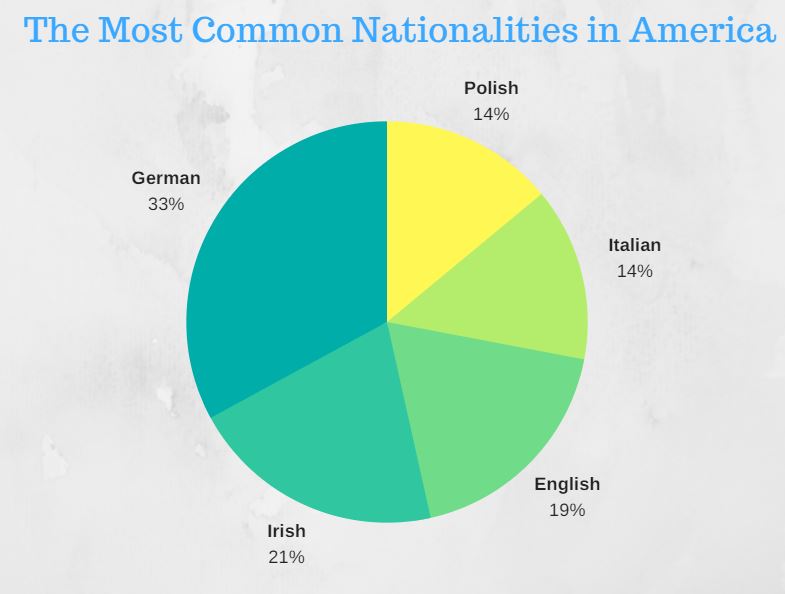In 1796, George Washington gave his farewell address and stated that his countrymen were “citizens, by birth or choice.” The United States population at that time was around 4 million people.
Currently, there are 325 million people living in America. USAFIS is a private immigration service that provides assistance to foreign nationals who want to move to America to live and work. Here is some information about the demographics that make America the country it is today:
Heritage and Ancestry
According to the Census Bureau, the most common nationalities in America are all European and include 8% German ancestry, 5% Irish ancestry, 4.5% English ancestry, 3.4% Italian ancestry, and 3.4% Polish ancestry. However, the fastest growing countries of origin among the United States population are Middle Eastern and African.
 The number of residents in the United States who are from Iraq is small, only 0.06% of the U.S. population, but that number has grown by 214% since the beginning of the Iraq war. The second largest nationality to show a large increase in the U.S. population is Kenyan. There are about 68,000 Kenyans in the U.S. today, which is a 179% increase over the last ten years. USAFIS has helped thousands of people from countries all over the world to find a new life in the United States.
The number of residents in the United States who are from Iraq is small, only 0.06% of the U.S. population, but that number has grown by 214% since the beginning of the Iraq war. The second largest nationality to show a large increase in the U.S. population is Kenyan. There are about 68,000 Kenyans in the U.S. today, which is a 179% increase over the last ten years. USAFIS has helped thousands of people from countries all over the world to find a new life in the United States.
Immigration
In the United States, about 13% of the people are born in other countries. The historic high number was 14.7 percent. In the past fifteen years, the number of immigrants in the U.S. who are first-generation has increased from 26 million to 40 million.
Eleven percent of U.S. citizens have at least one parent who was born in another country. Seventy-five percent of Americans are removed at least two generations from their ancestors who were immigrants. This means that both they and their parents were born in the United States. According to USAFIS, people from all over the globe have found a great home in the U.S., and you can too.
 According to the Census Bureau, people who are farther removed from the immigration experience, which is third-generation and above, tend to vote in numbers that are disproportionate compared to the rest of the population. Contact USAFIS today for more information on your eligibility to live and work in America.
According to the Census Bureau, people who are farther removed from the immigration experience, which is third-generation and above, tend to vote in numbers that are disproportionate compared to the rest of the population. Contact USAFIS today for more information on your eligibility to live and work in America.

